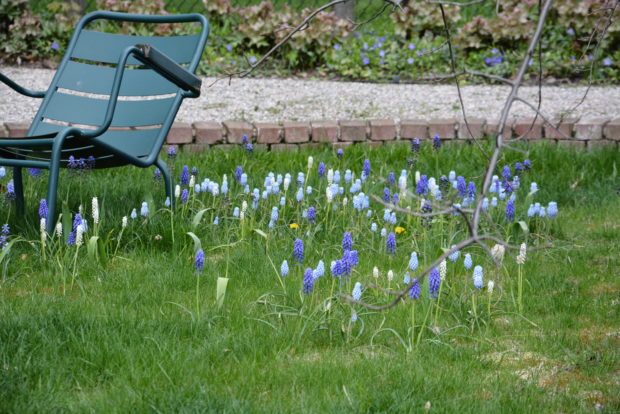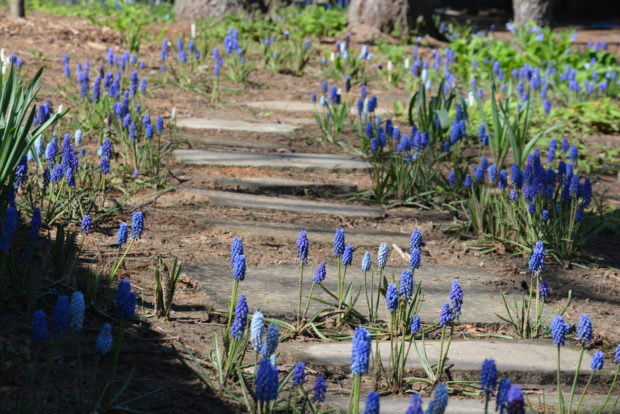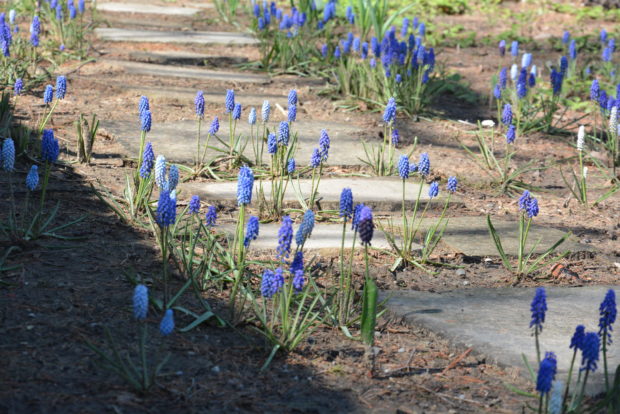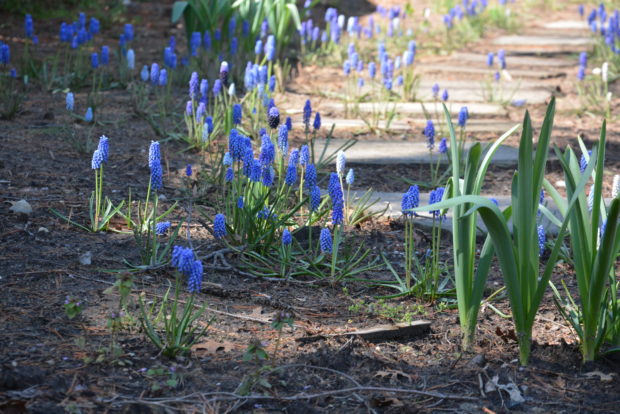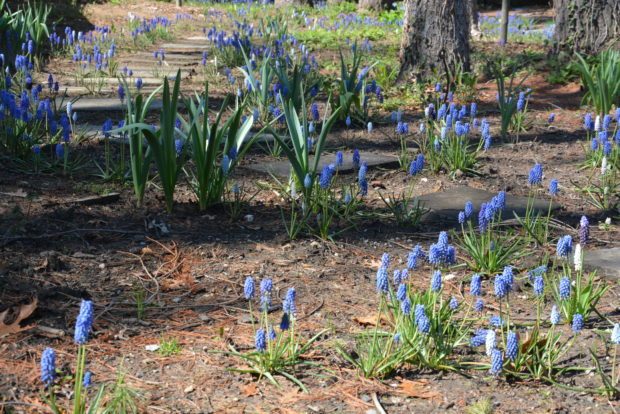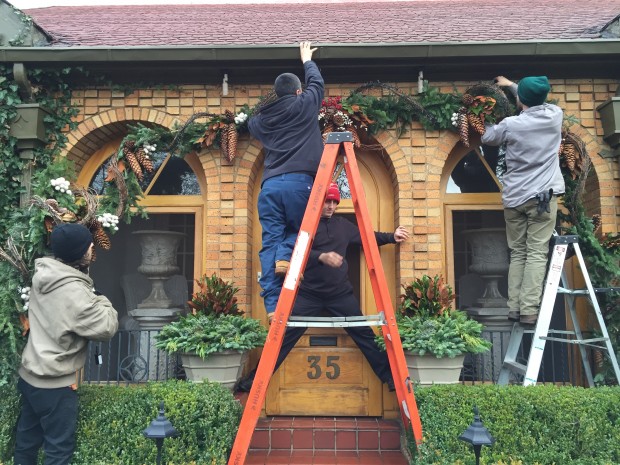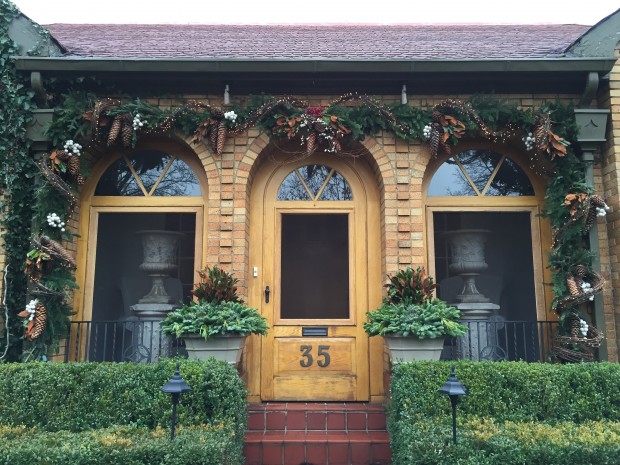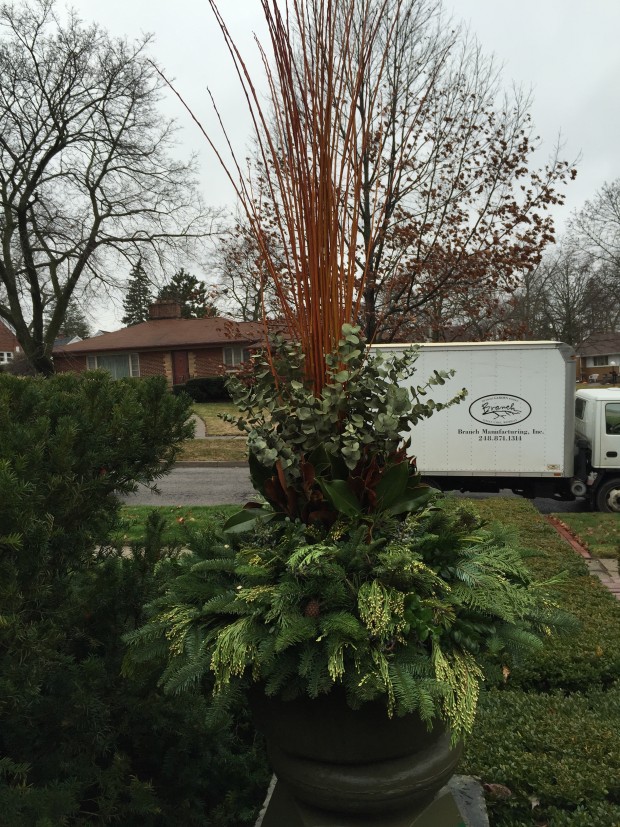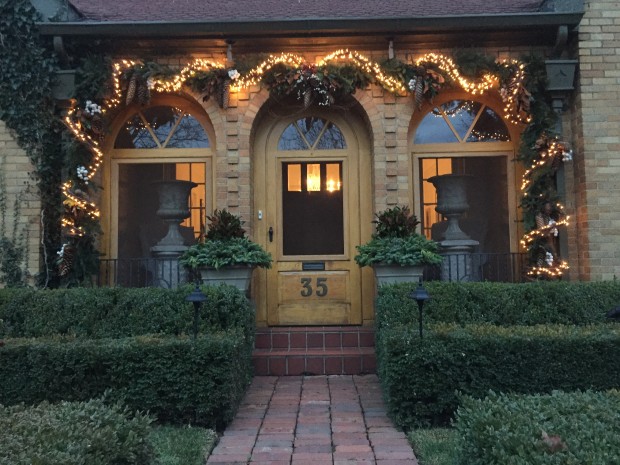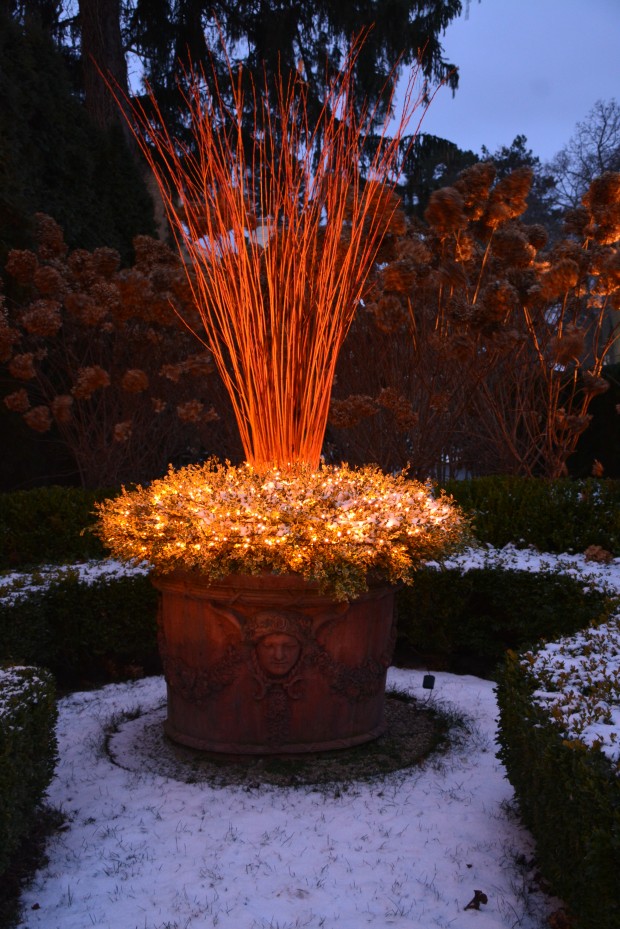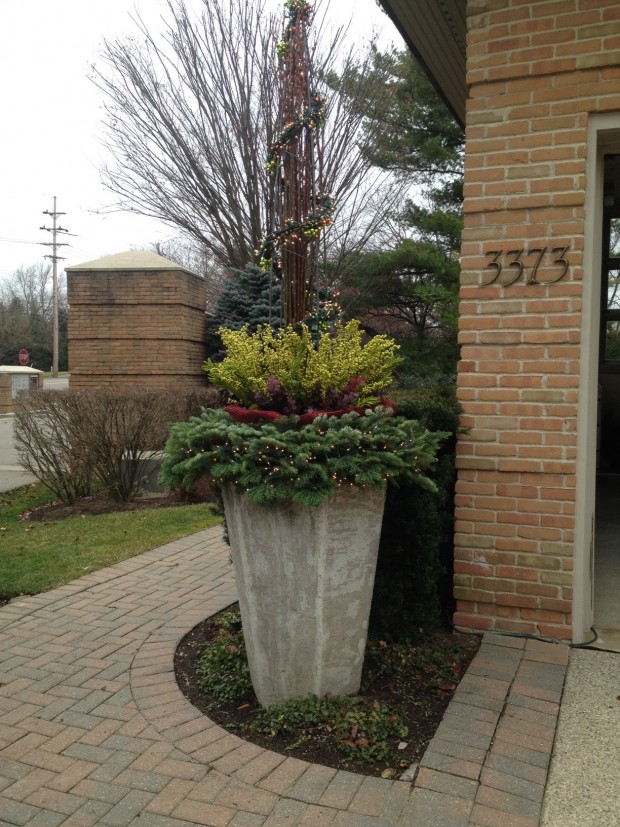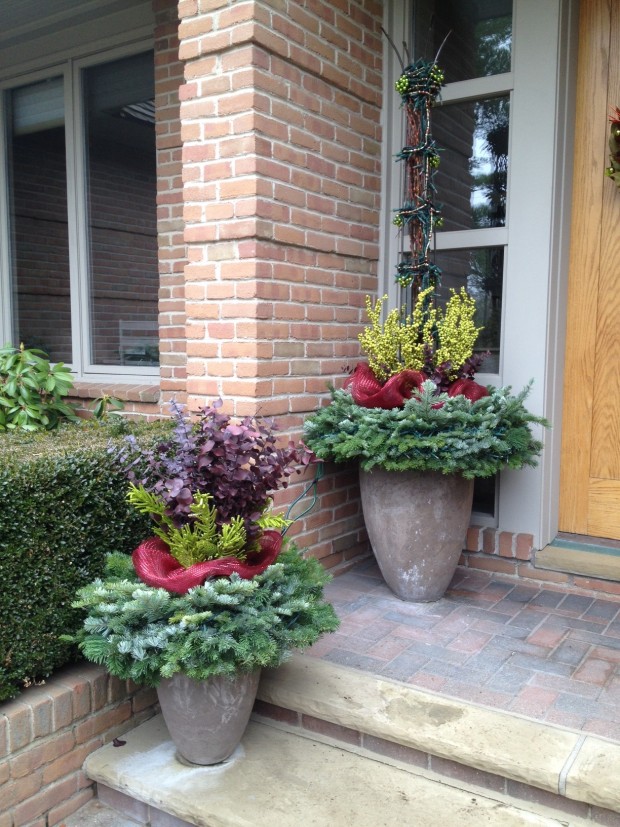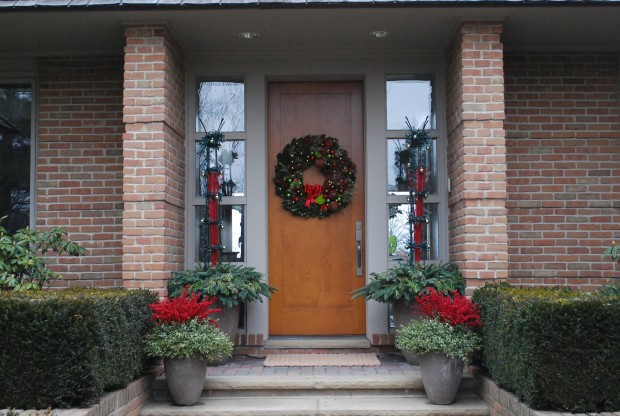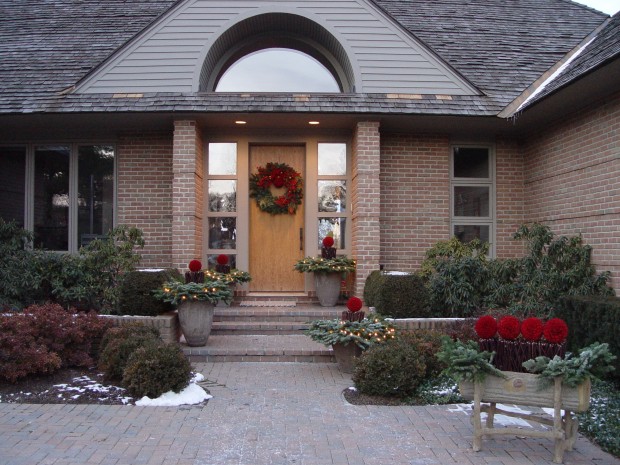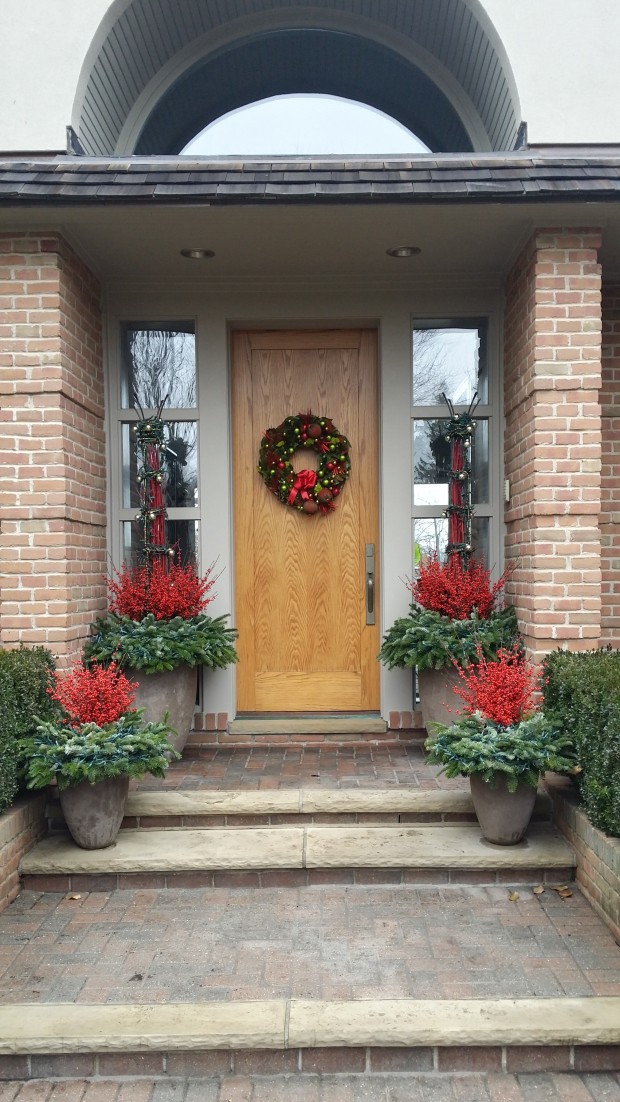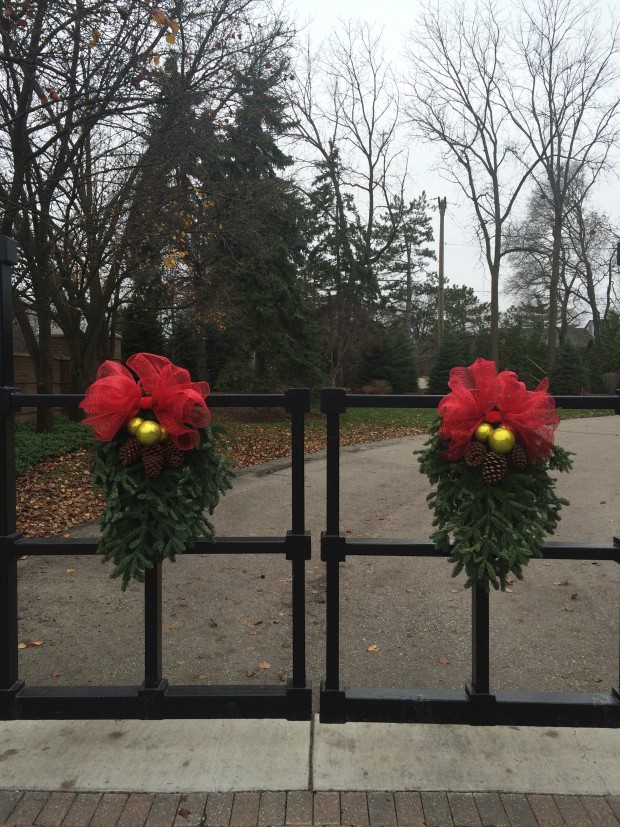
Every year, the prospect of having a full roster of container gardens to plant makes me want to black out. I spend the first three weeks of May utterly certain that I cannot plant one more pot. That I am out of ideas. Luckily, time passes by, and and I start shopping. A client I have worked for as long as this one is easy to shop for. I had a pair of giant banana plants to pick up at our farmer’s market at 5:45 am. I was ready at 7am to let Dan know that we would need two pallets-130 bags – of our custom container soil blend, and 30 bags of bark. We would need moss fabric for a pair of wire urns, and a ladder to tie the mandevillea to the steel plant climbers.
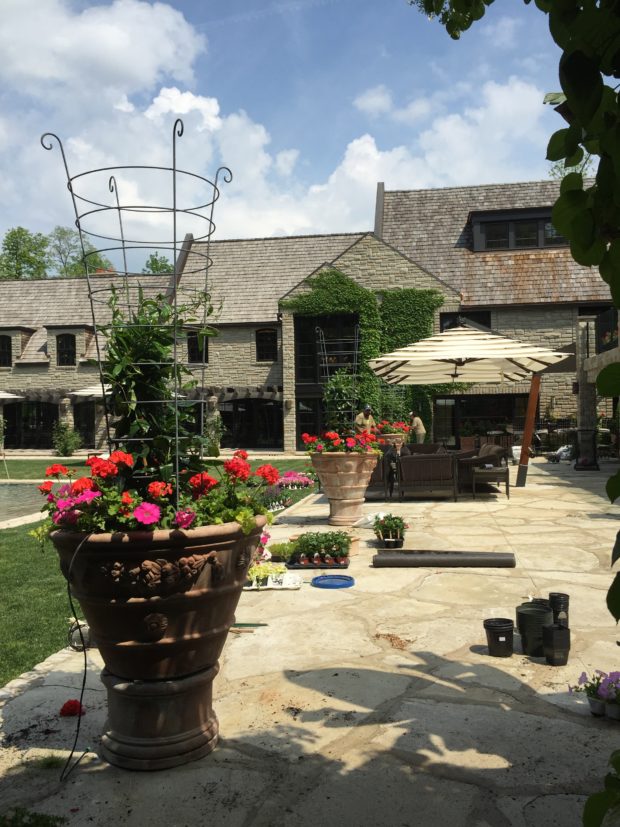 I had shopped with David and Riley on Friday. They put all of our plants on racks, and loaded them onto our trucks. At the end of the day Friday, I was ready in the plant regard. I had an inkling of an idea about what I would plant. Of course I was going over that inkling, critically. I had from 6-8am Saturday morning to print the photographs from last year, and write on them what materials we would use in them this year. Two hours gives me enough time to change my mind. Once my crew is ready to load, I am too. I take extras and alternates, just in case.
I had shopped with David and Riley on Friday. They put all of our plants on racks, and loaded them onto our trucks. At the end of the day Friday, I was ready in the plant regard. I had an inkling of an idea about what I would plant. Of course I was going over that inkling, critically. I had from 6-8am Saturday morning to print the photographs from last year, and write on them what materials we would use in them this year. Two hours gives me enough time to change my mind. Once my crew is ready to load, I am too. I take extras and alternates, just in case.
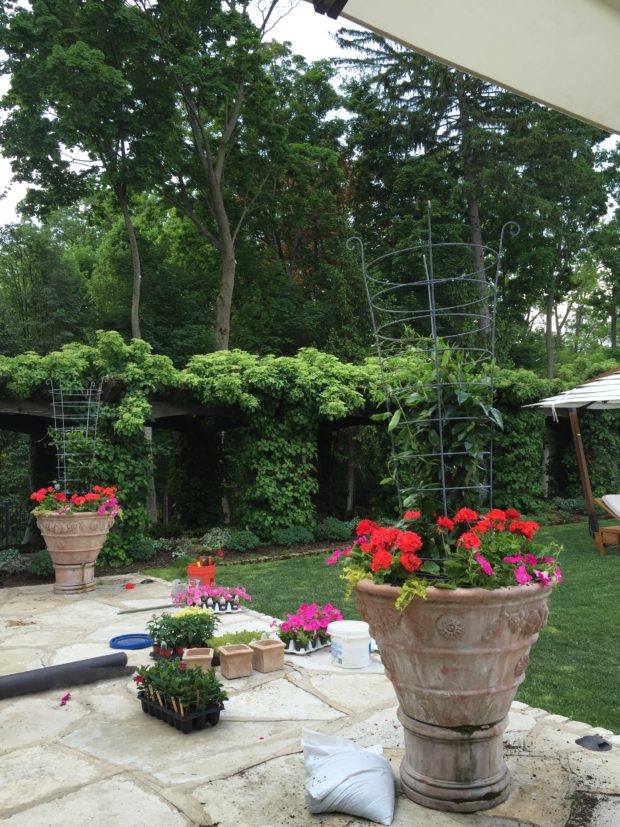 Once every pot had gotten filled with bark for drainage, and our container soil mix, all of the centerpieces get planted. Then I lay out the scheme for the rest of the pot. I was entirely absorbed and focused on how each plant would grow out, and interact with its neighbor. I favor containers that have a beautiful overall shape by the time they mature. My favorite part of this planting for a group of Italian terra cotta pots? Orange geraniums. Geraniums, as they provide an incredible amount of color when properly grown. They are heavy feeders. But more so than the bloom habit, that orange would contribute an interesting variation to a warm color palette. The red mandevilleas and red geraniums are a bluish red. The orange geraniums have just enough yellow to make the combination interesting. My client is keen about the drama that can be created by intense color.
Once every pot had gotten filled with bark for drainage, and our container soil mix, all of the centerpieces get planted. Then I lay out the scheme for the rest of the pot. I was entirely absorbed and focused on how each plant would grow out, and interact with its neighbor. I favor containers that have a beautiful overall shape by the time they mature. My favorite part of this planting for a group of Italian terra cotta pots? Orange geraniums. Geraniums, as they provide an incredible amount of color when properly grown. They are heavy feeders. But more so than the bloom habit, that orange would contribute an interesting variation to a warm color palette. The red mandevilleas and red geraniums are a bluish red. The orange geraniums have just enough yellow to make the combination interesting. My client is keen about the drama that can be created by intense color.
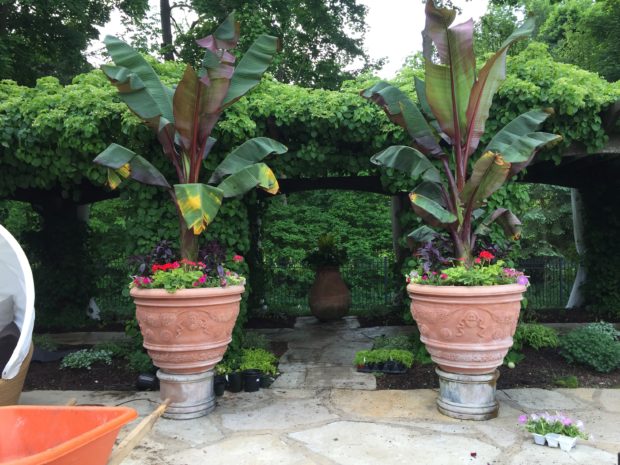 This pair of Italian pots can handle the size and textural drama of a pair of large scale bananas. Not yet visible are a collar of strobilantes, or Persian shield plants that will ring the trunks of the bananas. The chartreuse leaved Persian Queen geraniums and misty lilac waves petunias will highlight the iridescent red-violet of the Persian Shields.
This pair of Italian pots can handle the size and textural drama of a pair of large scale bananas. Not yet visible are a collar of strobilantes, or Persian shield plants that will ring the trunks of the bananas. The chartreuse leaved Persian Queen geraniums and misty lilac waves petunias will highlight the iridescent red-violet of the Persian Shields.
 Lime green is a key color in this planting scheme. All of the warm colors are all the more intense, by their proximity to lime green. The red represented in this container is red sunpatiens. They will grow quite large. The lime licorice will lighten that load of red.
Lime green is a key color in this planting scheme. All of the warm colors are all the more intense, by their proximity to lime green. The red represented in this container is red sunpatiens. They will grow quite large. The lime licorice will lighten that load of red.
 This big scented geranium will have pale pink flowers intermittently over the summer. But they are primarily grown for their bright apple green foliage that can be clipped into shapes. We gave this geranium the most rudimentary clip. My client has a lot of formally trimmed shrubs maintained by the company that prunes our boxwood at the shop. Her crew will put a skilled set of hands to the spherical shape of this geranium. It is under planted with an orange geranium of a different sort than the big growing zonal geraniums. Caliente geraniums come in a wide range of colors, and are extremely easy to grow. The pink and white bicolor trailing verbena “Lanai Twister Pink” is a beautiful addition to this series.
This big scented geranium will have pale pink flowers intermittently over the summer. But they are primarily grown for their bright apple green foliage that can be clipped into shapes. We gave this geranium the most rudimentary clip. My client has a lot of formally trimmed shrubs maintained by the company that prunes our boxwood at the shop. Her crew will put a skilled set of hands to the spherical shape of this geranium. It is under planted with an orange geranium of a different sort than the big growing zonal geraniums. Caliente geraniums come in a wide range of colors, and are extremely easy to grow. The pink and white bicolor trailing verbena “Lanai Twister Pink” is a beautiful addition to this series.
 There are two containers in fairly dense shade. The color of the lime dracaena “Janet Craig” brightens any shady area. The dracaena is under planted with bird’s nest ferns. The leaf form is simialr to the dracaena, but is a darker green.
There are two containers in fairly dense shade. The color of the lime dracaena “Janet Craig” brightens any shady area. The dracaena is under planted with bird’s nest ferns. The leaf form is simialr to the dracaena, but is a darker green.
 A boxwood topiary on standard is under planted with Persian Queen geraniums, red geraniums, and vista fuchsia petunias. The low terra cotta bowl features hot pink XL dahlias, black cherry supertunias, and a bicolor trailing verbena.
A boxwood topiary on standard is under planted with Persian Queen geraniums, red geraniums, and vista fuchsia petunias. The low terra cotta bowl features hot pink XL dahlias, black cherry supertunias, and a bicolor trailing verbena.
 3 terracotta boxes get identical treatment. Hot pink zonal geranium towers, and lime creeping jenny.
3 terracotta boxes get identical treatment. Hot pink zonal geranium towers, and lime creeping jenny.
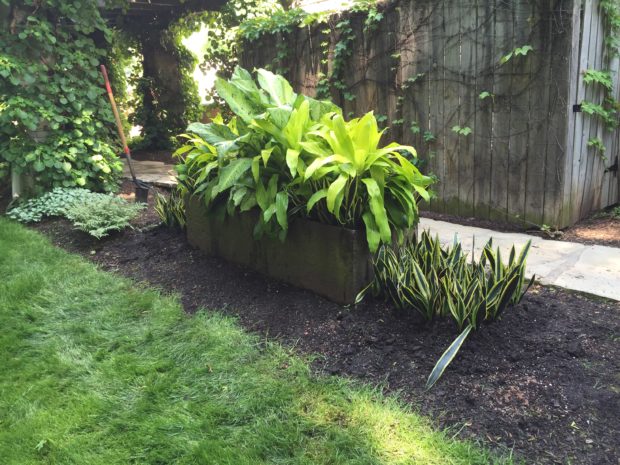 This old cast iron rectangular cauldron sits in a garden bed which is so shady that very little grows there. It is planted with a a pair of lime green fleck leafed dieffenbachia “Camouflage”, Janet Craig dracaenas, and Black Gold Xtreme sansevieria. The sansevieria in the box is repeated in ground at each end. This planting will thrive all summer long with next to no water.
This old cast iron rectangular cauldron sits in a garden bed which is so shady that very little grows there. It is planted with a a pair of lime green fleck leafed dieffenbachia “Camouflage”, Janet Craig dracaenas, and Black Gold Xtreme sansevieria. The sansevieria in the box is repeated in ground at each end. This planting will thrive all summer long with next to no water.
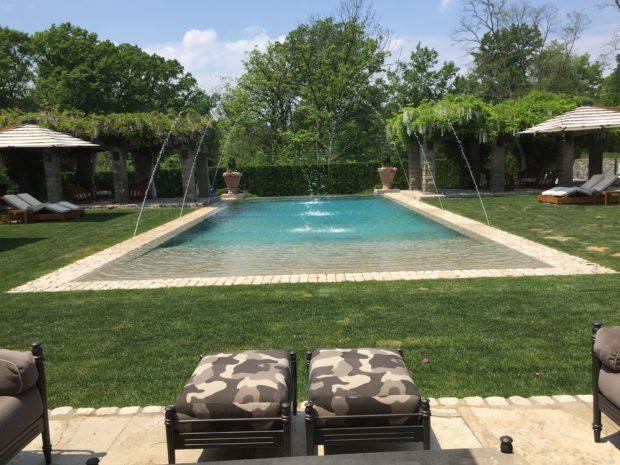 By 2pm, you would never know we had been there. It was a splashy beginning to our container planting season.
By 2pm, you would never know we had been there. It was a splashy beginning to our container planting season.

